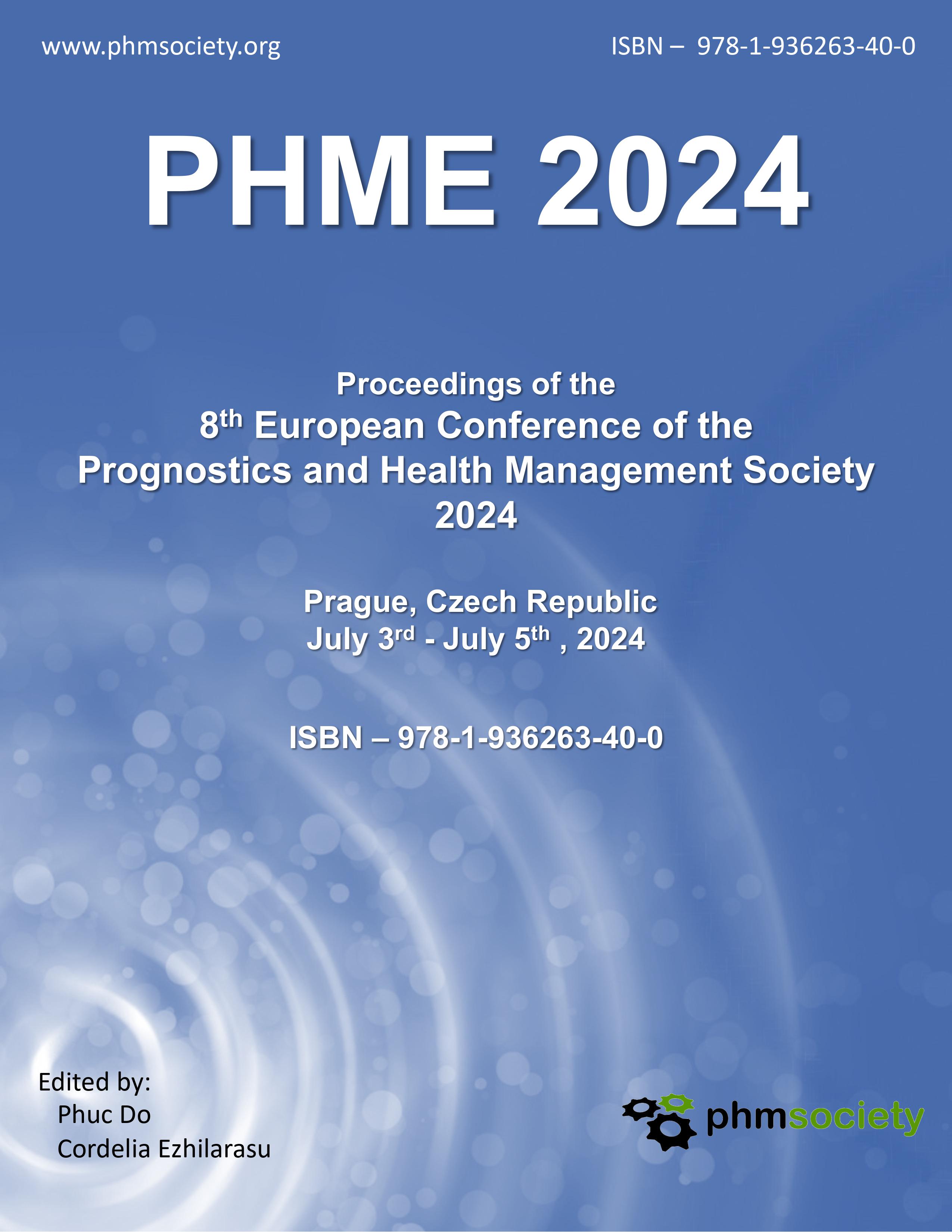Threshold Selection for Classification Models in Prognostics
##plugins.themes.bootstrap3.article.main##
##plugins.themes.bootstrap3.article.sidebar##
Abstract
In this study, we evaluate the performance of a prognostic classification model for NOX sensors in diesel engines over one month by comparing its predictions against actual outcomes. We then construct a validation dataset to assess the model's performance. By analyzing instances where the model's predictions were incorrect, we determine new threshold values that could potentially reduce errors for each false positive (FP) and false negative (FN). Subsequently, we create a dataset where the threshold varies for each observation and train a regression model with the modified threshold as the target variable. Our findings indicate that incorporating this approach, where the model's performance is iteratively refined using the validation dataset, leads to a reduction in both false positives and false negatives.
How to Cite
##plugins.themes.bootstrap3.article.details##
True Negative (TN), True Positive (TP), False Negative (FN), False Positive (FP), Receiver Operating Characteristic (ROC), Area Under ROC Curve - (AUC)
Andrew P. Bradley, The use of the area under the ROC curve in the evaluation of machine learning algorithms, Pattern Recognition, Volume 30, Issue 7, 1997, Pages 1145-1159, ISSN 0031-3203.
Reem Alotaibi, Peter Flach, Multi-label thresholding for cost-sensitive classification, Neurocomputing, Volume 436, 2021, Pages 232-247, ISSN 0925-2312.
Kui Yang, Rongjie Yu, Xuesong Wang, Mohammed Quddus, Lifang Xue, How to determine an optimal threshold to classify real-time crash-prone traffic conditions?, Accident Analysis & Prevention, Volume 117, 2018, Pages 250-261, ISSN 0001-4575.
J. M. Johnson and T. M. Khoshgoftaar, "Deep Learning and Thresholding with Class-Imbalanced Big Data," 2019, 18th IEEE International Conference On Machine Learning And Applications (ICMLA), Boca Raton, FL, USA, 2019, pp. 755-762.
Lipton, Z. C., Elkan, C., & Narayanaswamy, B. (2014). Thresholding classifiers to maximize F1 score. arXiv preprint arXiv:1402.1892.
J. Hancock, J. M. Johnson and T. M. Khoshgoftaar, "A Comparative Approach to Threshold Optimization for Classifying Imbalanced Data," 2022, IEEE 8th International Conference on Collaboration and Internet Computing (CIC), Atlanta, GA, USA, 2022, pp. 135-142.
Chen, J. J., Tsai, C. A., Moon, H., Ahn, H., Young, J. J., & Chen, C. H. (2006). Decision threshold adjustment in class prediction. SAR and QSAR in Environmental Research, 17(3), 337–352.
Shao, Huiyang, et al. "Weighted roc curve in cost space: Extending auc to cost-sensitive learning." Advances in Neural Information Processing Systems 36 (2024).
Draszawka, Karol, and Julian Szymański. "From Scores to Predictions in Multi-Label Classification: Neural Thresholding Strategies." Applied Sciences 13.13 (2023): 7591.

This work is licensed under a Creative Commons Attribution 3.0 Unported License.
The Prognostic and Health Management Society advocates open-access to scientific data and uses a Creative Commons license for publishing and distributing any papers. A Creative Commons license does not relinquish the author’s copyright; rather it allows them to share some of their rights with any member of the public under certain conditions whilst enjoying full legal protection. By submitting an article to the International Conference of the Prognostics and Health Management Society, the authors agree to be bound by the associated terms and conditions including the following:
As the author, you retain the copyright to your Work. By submitting your Work, you are granting anybody the right to copy, distribute and transmit your Work and to adapt your Work with proper attribution under the terms of the Creative Commons Attribution 3.0 United States license. You assign rights to the Prognostics and Health Management Society to publish and disseminate your Work through electronic and print media if it is accepted for publication. A license note citing the Creative Commons Attribution 3.0 United States License as shown below needs to be placed in the footnote on the first page of the article.
First Author et al. This is an open-access article distributed under the terms of the Creative Commons Attribution 3.0 United States License, which permits unrestricted use, distribution, and reproduction in any medium, provided the original author and source are credited.
